KUALA LUMPUR, Aug 31 — Were you at Stadium Merdeka in 1957 and 1963 when Tunku Abdul Rahman Putra Al-Haj shouted “Merdeka" seven times — marking Malaya's independence and Malaysia's birth?
Do you still remember what it looked like? Or can you imagine it (if you were not born yet) from pictures or old news reels?
Just step foot into Stadium Merdeka this weekend, and it will be like hopping on a time machine. It now looks exactly as it did in 1957.
Laurence Loh, a renowned conservation architect who was in charge of the award-winning project to restore Stadium Merdeka, spoke to Malay Mail about the efforts made to bring it back to its original design.
In 2000, PNB Merdeka Ventures Sdn Bhd stepped in to buy Stadium Merdeka and rescue it from redevelopment. Badan Warisan Malaysia (BWM) was appointed as conservation consultant, and Loh's firm Arkitek LLA Sdn Bhd was one of the firms involved in the conservation project.
Loh said the project's clients, PNB Merdeka Ventures, “managed to retrieve the original construction drawings from JKR" and also contacted the stadium's designer Tan Sri Stanley Jewkes. (Tunku Abdul Rahman had in 1956 tasked Jewkes, who was both an architect and engineer and deputy director at the Public Works Department (JKR), with the project to design and build the stadium.)
“The whole stadium in terms of its attributes of authenticity — form and design, materials and workmanship techniques, were recaptured in its restoration,” said Loh in an email interview.
Over the years, Stadium Merdeka went through multiple modifications — such as the addition of reinforced concrete upper terraces built on top of open-air seating on the north, east and south side of the stadium to add 25,000 seats ahead of Malaysia's hosting of the 1989 South-east Asian (SEA) Games.
Loh said these reinforced concrete upper tiers were removed to restore Stadium Merdeka to its original 20,000 seat capacity.
As part of the restoration project, the original scoreboard as well as toilet blocks — which had previously been demolished to make way for the upper tiers of seats — were reinstated in their original forms at their original location (on the other side of the field / opposite the grandstand), Loh said.
He also gave a list of other newer additions which were removed to restore Stadium Merdeka to its original 1957 design:
- enclosed Royal Box, VIP seating, press boxes
- enclosed ticket booths
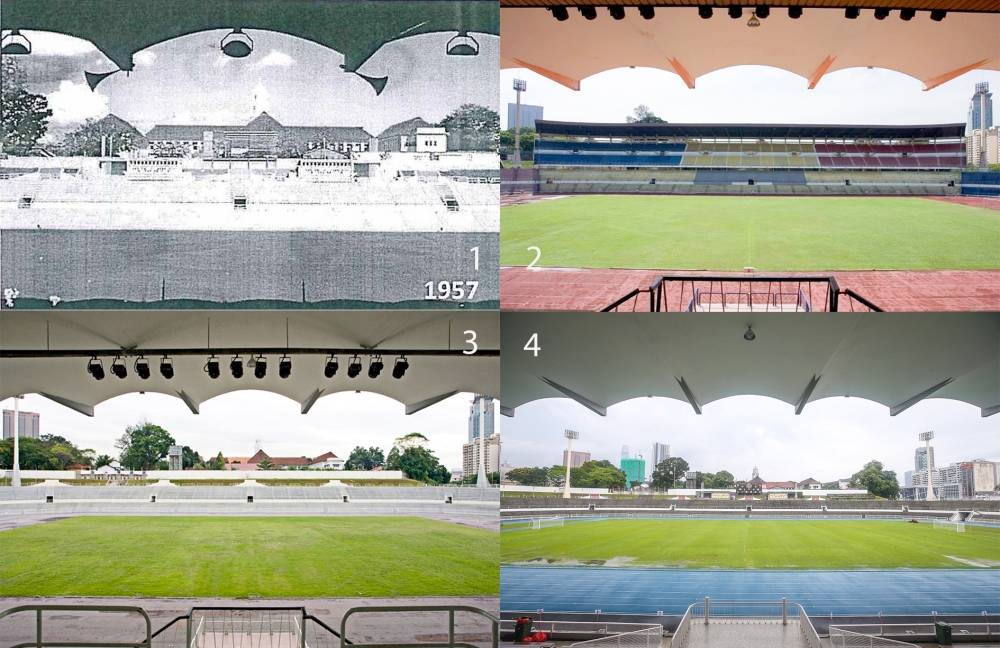
Why are these changes important?
According to the United Nations Educational, Scientific and Cultural Organisation's (Unesco) 2013 document on lessons learnt from conservation projects in the Asia and Pacific region, the upper tiers “added weight had caused structural problems and was threatening further damage to the stadium's key structural components”, and its removal allowed a return to the stadium's original design to have a low profile within the surrounding area.
The removal of the new additions of the enclosed air-conditioned spaces at the grandstand's first floor allowed Stadium Merdeka to return to its architect's design for it to have natural ventilation suitable for Kuala Lumpur's tropical conditions, the Unesco document said.
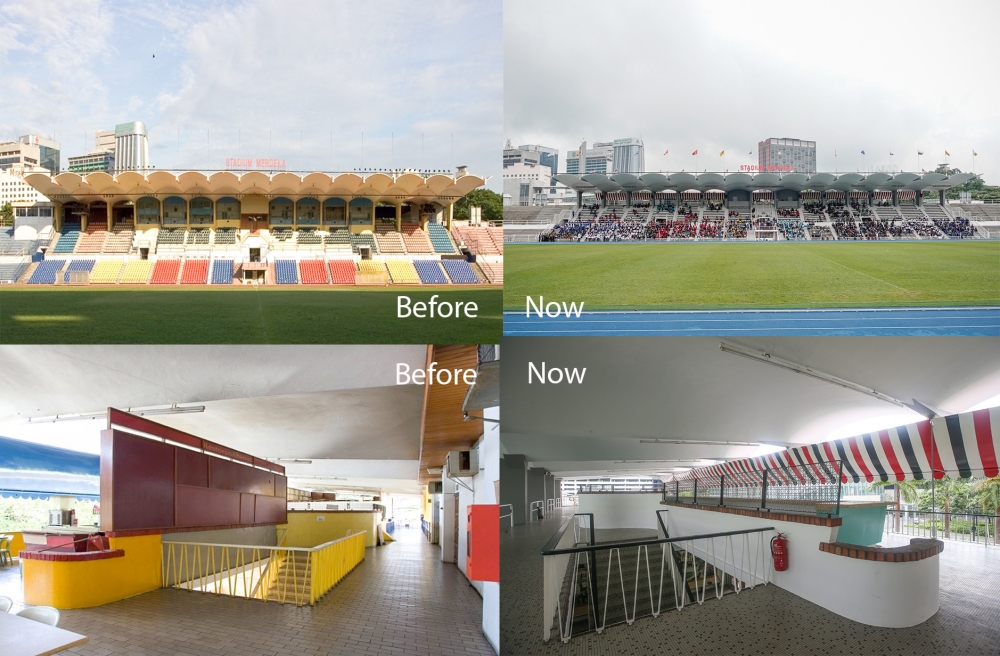
Asked if special expertise was required for the conservation project, Loh said: “As it was built using contemporary materials and modern engineering technology of the day, we were able to appoint regular contractors.”
“Using simple conservation techniques like creating paint swatches by stripping back layers of paint, we were able to determine the original colours on the walls and even on the striped metal awning system at the front of the stadium that runs continuously just under the barrel vault concrete roof at the first floor level,” Loh, who is also an adjunct professor at the University of Hong Kong, told Malay Mail.
The Unesco document said Stadium Merdeka's original colour scheme was reinstated including for its metal awning and concrete surfaces, and that the “final result was a near perfect approximation of the original colours”.
It noted that the conservation team had even chosen to brush paint onto concrete surfaces rather than spray paint on to achieve a greater sense of authenticity.
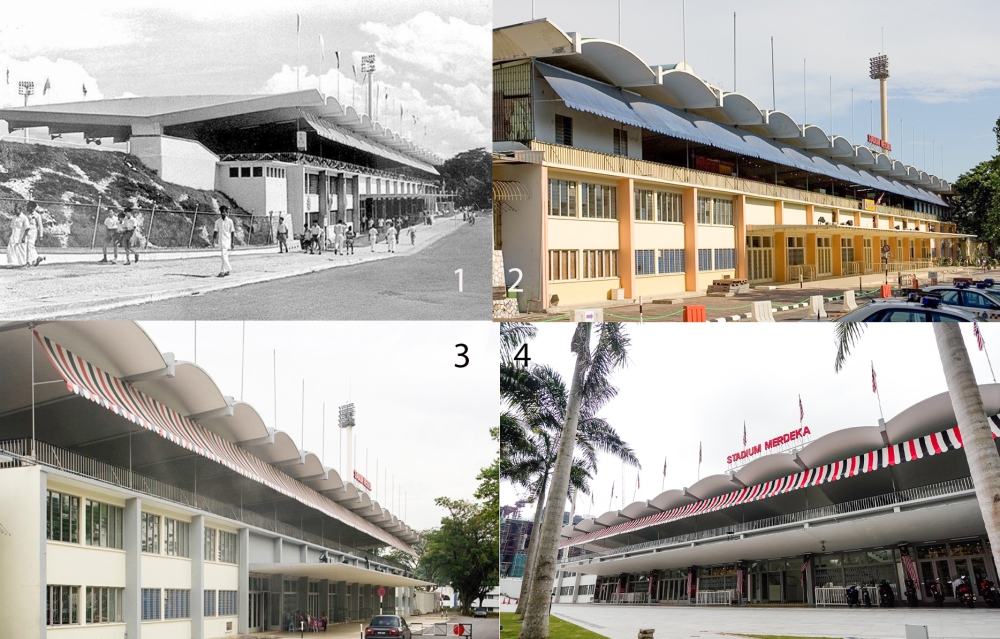
“We replaced the mosaic tiles in the lobby using like for like, having found remnants left behind on some original wall skirting. As these were no longer available, we sent samples to a tile manufacturer in China who replicated them. The result was a perfect match.”
You can now see these mosaic tiles in the main lobby at the ground floor just after the main entrance, on the staircases leading up to the first floor, the entire first floor, and also on the floor of the saluting platform at the grandstand.
Apart from the mosaic tiles that were sourced from China, Loh said the remaining materials used for Stadium Merdeka's restoration “were sourced locally”.
Here is a list by Loh to Malay Mail of other conservation work that were carried out at Stadium Merdeka:
- “The turnstiles were repaired so that all their parts were in working order.
- “The bulbs for the floodlights were replaced.
- “The plastic bucket seats in the grandstand were replaced with timber-strip seats as per the original design, painted in brown.
- "The cantilevered shell roof, the piece de resistance, the crowning element of the stadium’s design was repaired where needed, as with the 14 flag masts."
“Every major element of the stadium including the terraces, the tunnels and toilets were repaired and retained as is.
“In a nutshell, the stadium on completion of the restoration process looked as new as the day it was unveiled in 1957,” he said.
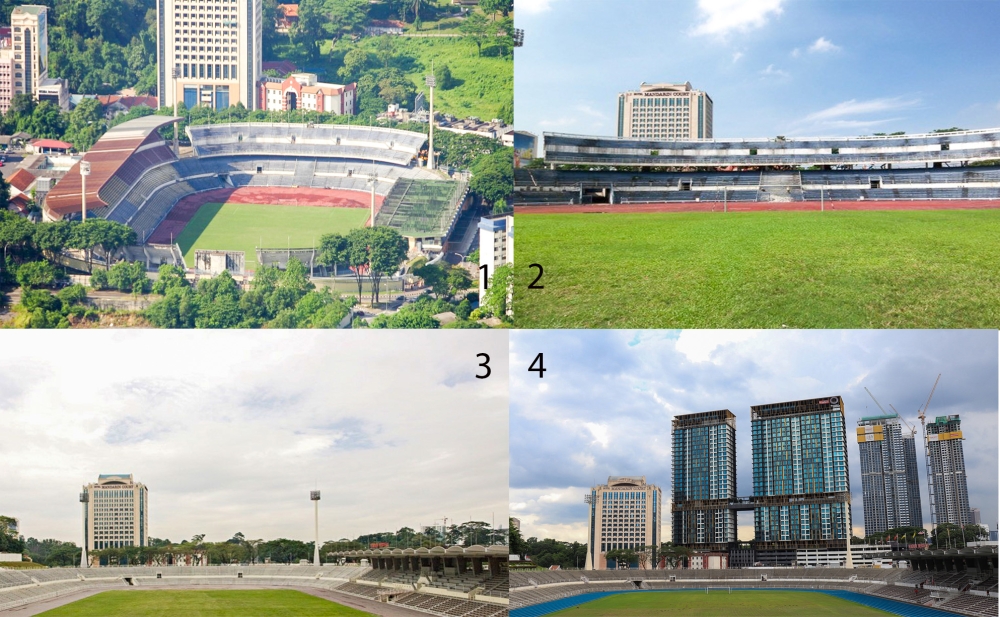
Apart from repairs where necessary and the newer additions that were removed, Loh confirmed that these parts of Stadium Merdeka are still the original ones from 1957: the concrete floodlight towers, staircases, terraces, tunnels, and the cantilevered shell roof.
At the time Stadium Merdeka was completed on August 21, 1957, it had the largest cantilevered shell roofs in the world and it was also the longest dual-direction cantilevered structure in South-east Asia then.
According to an interview of Jewkes in the book “The Merdeka Interviews : Architects, Engineers and Artists of Malaysia's Independence", the design of this shell roof had sockets for 14 flag poles — one for each shell — and with no particular reason for this number.
Also in 1957, the stadium's four 140-feet-high prestressed concrete floodlight towers — at all four corners of the stadium (southeast, northwest, southwest, northeast) — were the tallest prestressed structure in the world.
Based on information provided by PNB Merdeka Ventures to Malay Mail, the restoration works for Stadium Merdeka were carried out in two phases, with the first phase including removal of the upper tier seats to restore the capacity to 20,000 seats, removal of the running tracks and reinstallation of the football field.
Under the second phase, the restoration works included:
- Restoration to original 1957 form: Scoreboard reconstructed, washrooms which had been demolished were restored at eastern terrace (area near Victoria Institution)
- Retiling with mosaic tiles matching 1957 look at main entrance
- All three VIP rooms — located at the ground floor just before entering the grandstand area — were installed with new carpet that matched its state in 1957.
- A lift for visitors with disabilities was installed at the ground floor just before entering the grandstand area, for access to the first floor.
According to a November 2021 news report by local daily The Edge, the restoration work cost RM13.7 million (RM5.2 million for first phase, RM8.5 million for second phase).
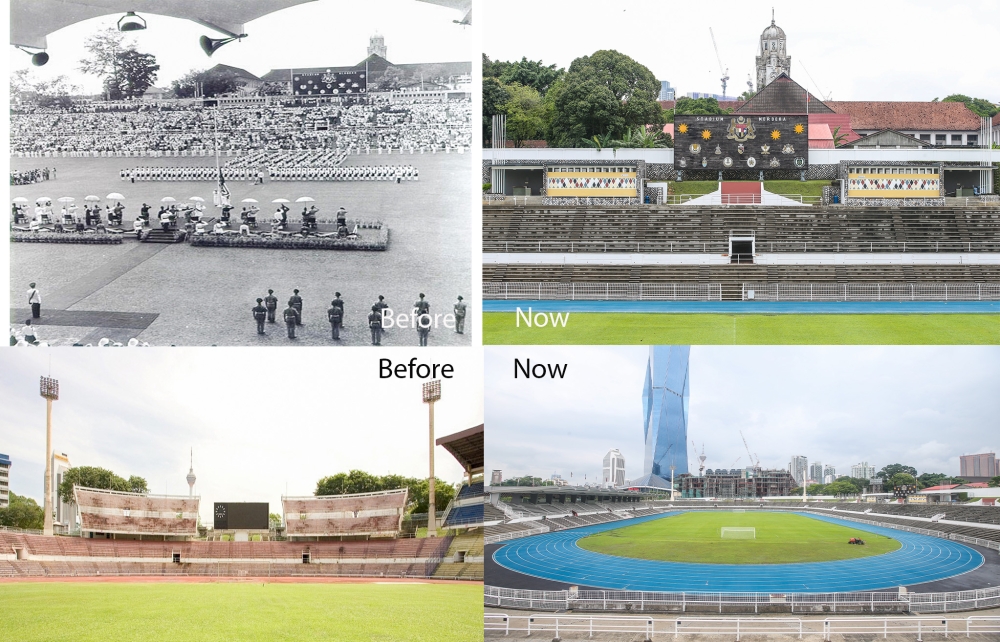
Loh said the restoration work started in 2005 and was completed in time for the 50th anniversary of Merdeka in 2007.
On September 1, 2008, Stadium Merdeka's restoration gained international recognition by winning an Award of Excellence in the 2008 UNESCO Asia-Pacific Heritage Awards for Culture Heritage Conservation.
On February 14, 2009, Stadium Merdeka was listed as a national heritage site.
Stadium Merdeka is not just on display for history buffs. It is now open to the public, with its newly-installed eight-lane running track available for use for free at certain allocated times and the venue also available for paid booking for private events.
Check with their social media platforms for any new updates.
Recommended reading: Stadium Merdeka is open now! Enjoy heritage tours, community markets and more this Merdeka week (VIDEO)



















